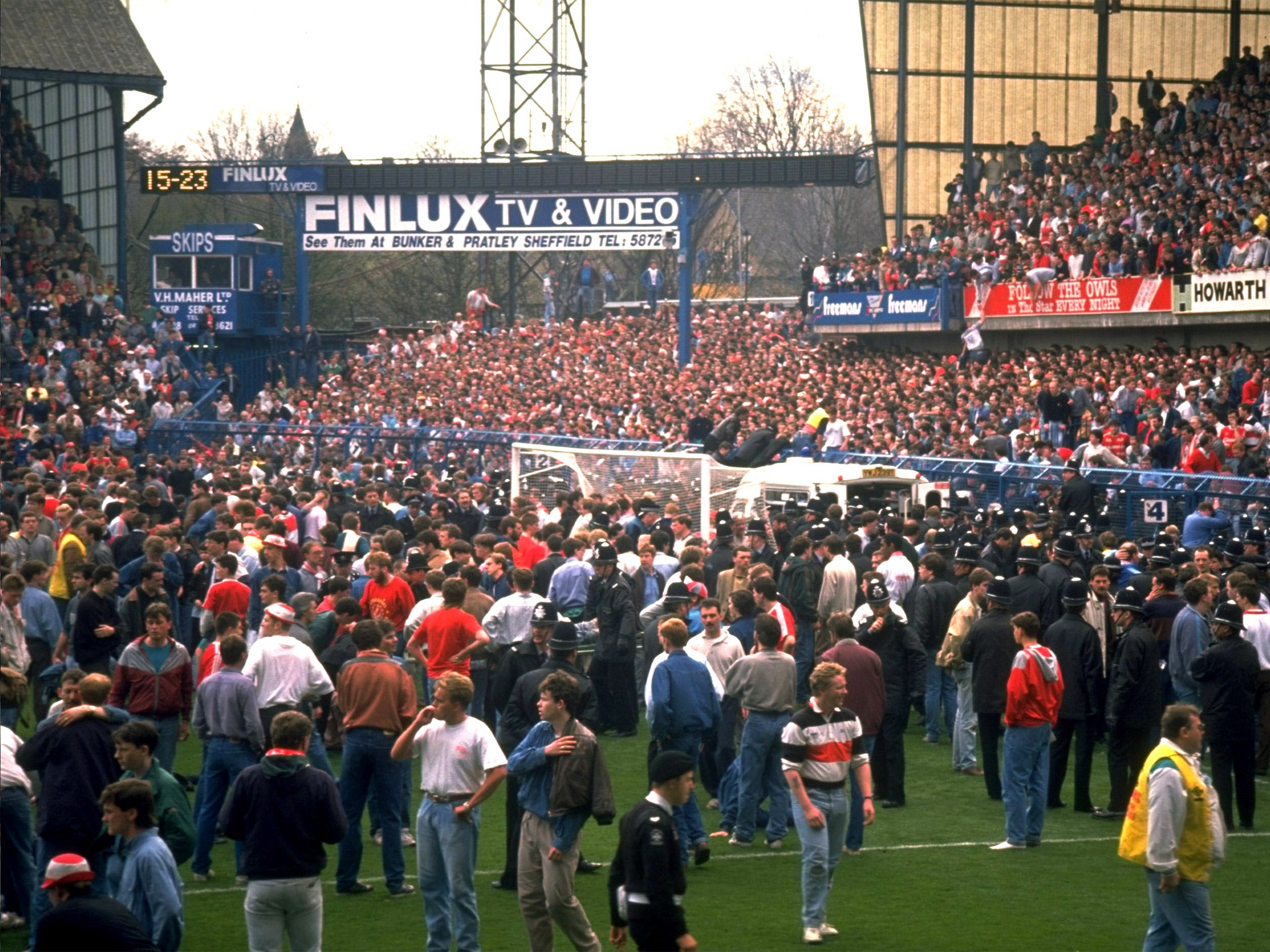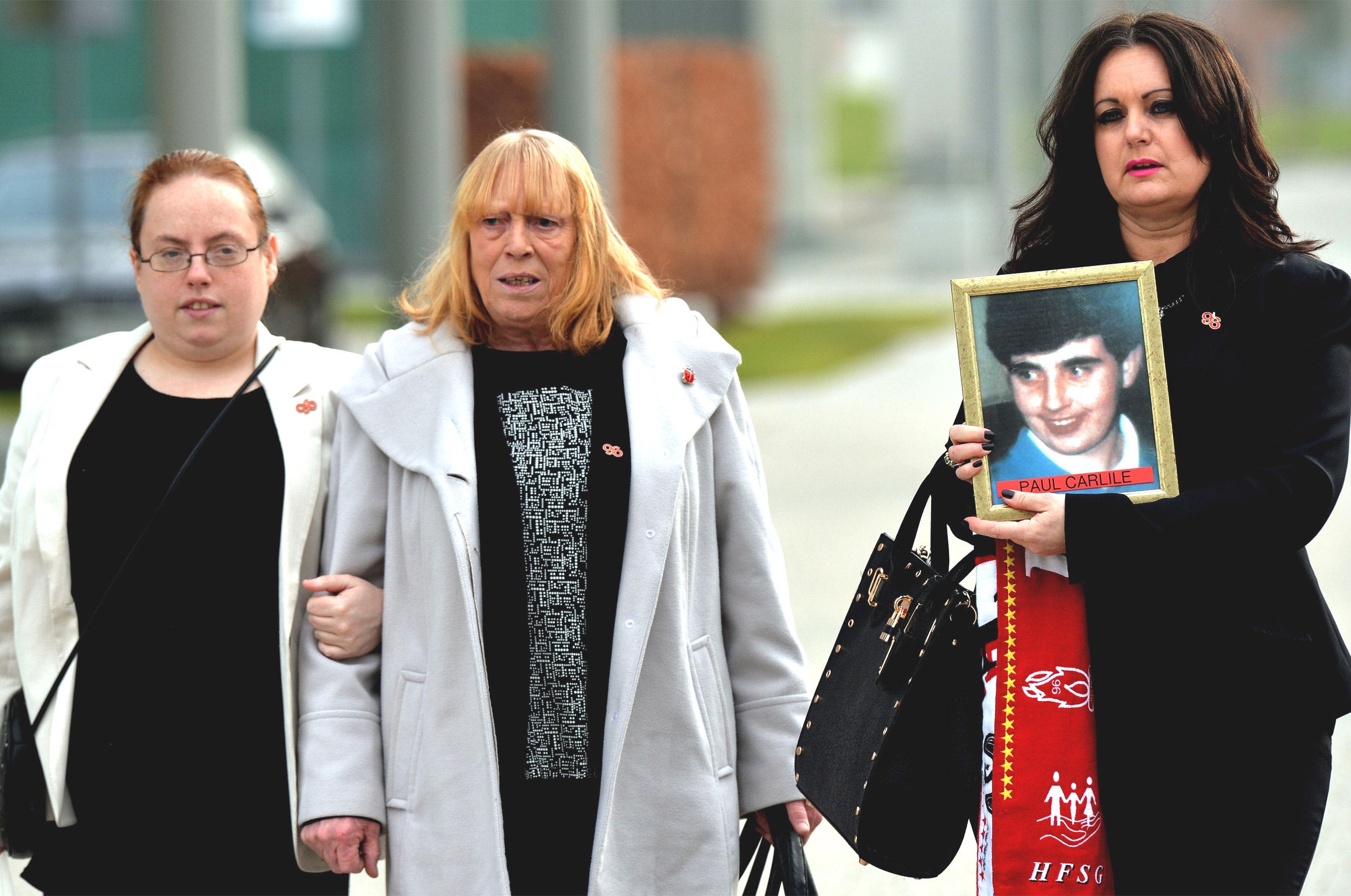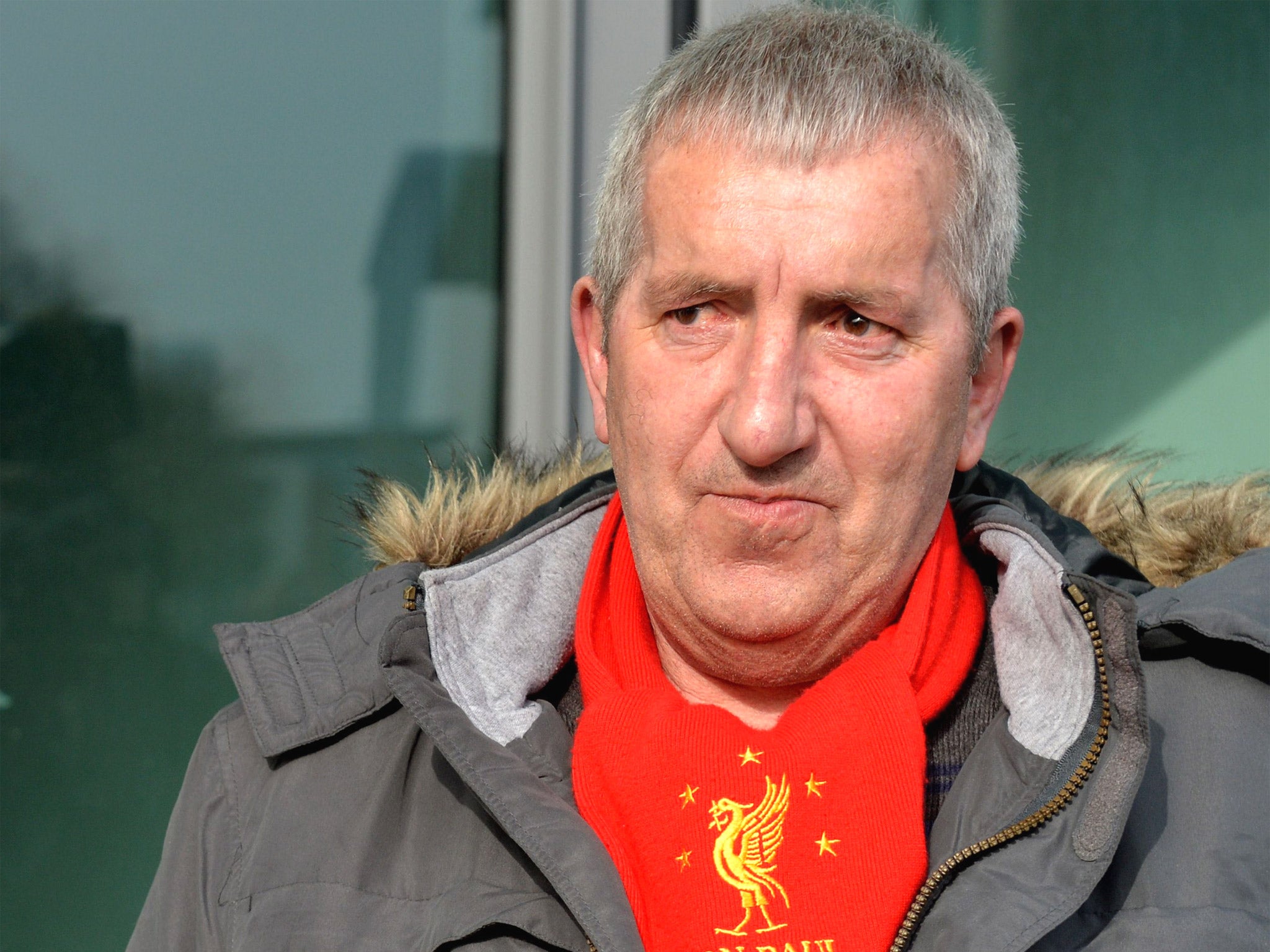Hillsborough disaster inquest: One football game, 96 dead, finally a chance for justice
Every institutional obstacle available had been used to prevent it but now the bereaved have finally got their day in court

Your support helps us to tell the story
From reproductive rights to climate change to Big Tech, The Independent is on the ground when the story is developing. Whether it's investigating the financials of Elon Musk's pro-Trump PAC or producing our latest documentary, 'The A Word', which shines a light on the American women fighting for reproductive rights, we know how important it is to parse out the facts from the messaging.
At such a critical moment in US history, we need reporters on the ground. Your donation allows us to keep sending journalists to speak to both sides of the story.
The Independent is trusted by Americans across the entire political spectrum. And unlike many other quality news outlets, we choose not to lock Americans out of our reporting and analysis with paywalls. We believe quality journalism should be available to everyone, paid for by those who can afford it.
Your support makes all the difference.It took six and a half minutes to read the names of all 96 dead: a father and son, three sets of brothers, a pair of sisters, friends who travelled together, in expectation, to a football match on a sunny day.
The oldest to die was 67-year-old Gerard Baron, the youngest, 10-year-old Jon-Paul Gilhooley. Among the victims were 38 teenagers and a further 40 in their 20s – a total of 89 men and boys, seven women and girls. Nearly all died in the stadium on 15 April 1989 the result of catastrophic chest compression injuries.
These were the victims of the Hillsborough disaster. On the first day of evidence at the fresh inquests into their deaths, Coroner Lord Justice Goldring told the jury that it was their task to decide which opportunities had been missed that might have saved their lives, and what underlying circumstances contributed to a tragedy that was, he said, “seared on to the memories of the very many people it affected”.
Outlining the facts, the judge warned against the “wisdom of hindsight” but said it would be shown that the capacity standing figure on the safety certificate for the Leppings Lane end, where the deaths occurred, was 10,100. The expert evidence would be that this figure was “substantially too high”, Lord Justice Goldring said. The jury saw grainy CCTV images depicting the build-up of crowds outside the stadium minutes before kick-off, as well as a harrowing photo taken from behind the goal at the crush’s height.

There had been previous incidents at the ground including a year earlier when Liverpool and Notts Forest met in the 1988 FA Cup semi-final. “At least some senior personnel in South Yorkshire Police, the club and the FA appear to have regarded the match as a success,” he said. This was despite crowd reports of “pressure and crushing”.
The judge described how Liverpool FC secretary Peter Robinson wrote to the FA when it was mooted that the 1989 tie involving the same teams should be at Hillsborough urging them to switch ticket allocation to allow Liverpool supporters more space.
The inquest heard that previous match day commander Chief Superintendent Brian Mole, who had a “wealth of experience” was replaced by Chief Superintendent David Duckenfield who had been promoted less than three weeks before the match.
Although he was an experienced criminal investigator he had never commanded a match at Hillsborough. “Whether this was a sensible decision may be something for you to consider,” the judge told the jury.
For the game, attended by 54,000 fans, there were 810 officers on duty at the ground – 19 per cent less than the previous year but still a “very substantial” figure, he said.
Thirty eight per cent of the force’s available officers had been involved in the planning and execution, it was added. There were also 376 stewards and gate attendants – most of whom had some training from the club and “some limited briefings” by police.
No cutting equipment was present at the ground and one ambulance was on standby with four paramedics.
While police reported incidents of bad behaviour others described the atmosphere as good natured. There were relatively few arrests and no serious clashes between fans.

Tickets advised fans to arrive by 2.45pm and the police policy was to “allow fans to find their own level” on the terraces. The judge urged the jury to consider how easy it was to navigate the radial fences and rear doors which allowed movement between pens. He also highlighted a decision to remove one of the crush barriers from the terrace end – a modification suggested by South Yorkshire Police – which affected the force of surging fans.
Outside, there was no police cordon to ensure orderly queues or to sift those without tickets. Problems were already evident by 2.17pm. As they escalated Ch Supt Duckenfield decided it was too late to delay kick off, the inquest heard.
By 2.44pm a senior officer asked for gates to be opened to ease conditions outside. It was only on his third request that the match commander agreed. However, Ch Supt Duckenfield later told FA chief Graham Kelly that one gate had been prized opened by fans.
“There is no question of Gate C having been forced. Ch Supt Duckenfield ordered it be opened,” the judge said, a remark which resulted in “seriously inaccurate” media reports on the day. “You will want to consider why Ch Supt Duckenfield said what he did.”
When the order was given there were no further instructions on how to manage the crowd once it went through a tunnel to the pens where supporters described being lifted off their feet and carried into the already packed terrace. The judge said the jury would have to decide if the order to open the gates should have been made and if the danger inside might have been foreseen.
The jury heard how one PC opened a door to the pens on his own initiative, another inspector described seeing a “river of people” enter the Leppings Lane end. In the police control room, where Ch Supt Duckenfield was, it was believed a pitch invasion was under way. As the match began Liverpool hit the crossbar causing fans to surge and one barrier collapsed. Officers were unable to get through to the control room as the radio was jammed. The match was eventually halted when an inspector ran on to the pitch.
As the disaster unfolded the club provided just six stretchers, St John Ambulance had a further three. Fans ripped down hoardings to ferry supporters to help as police, fearing an altercation, massed on the half way line. No effective triage system was set up on the pitch, the judge said and urged jurors to consider if this failure could have led to loss of life.
The injured and the dead were taken to the club’s gym. Alcohol blood tests were taken from the corpses. In the event, more than half either had no or “entirely negligible” alcohol levels, the judge said.
Relatives later complained that they were treated with little compassion when they went to identify the bodies at a bare and dismal building opposite a police station. Polaroid photos of the victims were pinned to a notice board for them to identify while requests for physical contact were refused, the judge said.
Crowd safety: A disturbing history
Hillsborough had a history of crowd-safety issues. It was built in 1899, and its West Stand was added in 1965. In the 1981 game between Tottenham Hotspur and Wolverhampton Wanderers, 38 fans were crushed at the Leppings Lane end – scene of the later tragedy. High mesh wire had been added in 1977 amid mounting fears over football hooliganism. But at the 1981 incident, doors on to the pitch had been opened and there were no fatalities.
A series of radial fences was added to the terrace to prevent further crushing. But officials still had no way of counting how many fans had gone into each of the pens created.
In 1988 there were reports of “pressure and crushing” at the FA Cup semi-final between Liverpool and Nottingham Forest. Liverpool officials complained that the club received 24,000 tickets, of which 10,100 were for the cheap terraces. In contrast, Nottingham Forest received 30,000 tickets, 21,000 for standing entrance. Attempts to have the allocation changed were rejected after South Yorkshire Police opposed the request.
Join our commenting forum
Join thought-provoking conversations, follow other Independent readers and see their replies
Comments